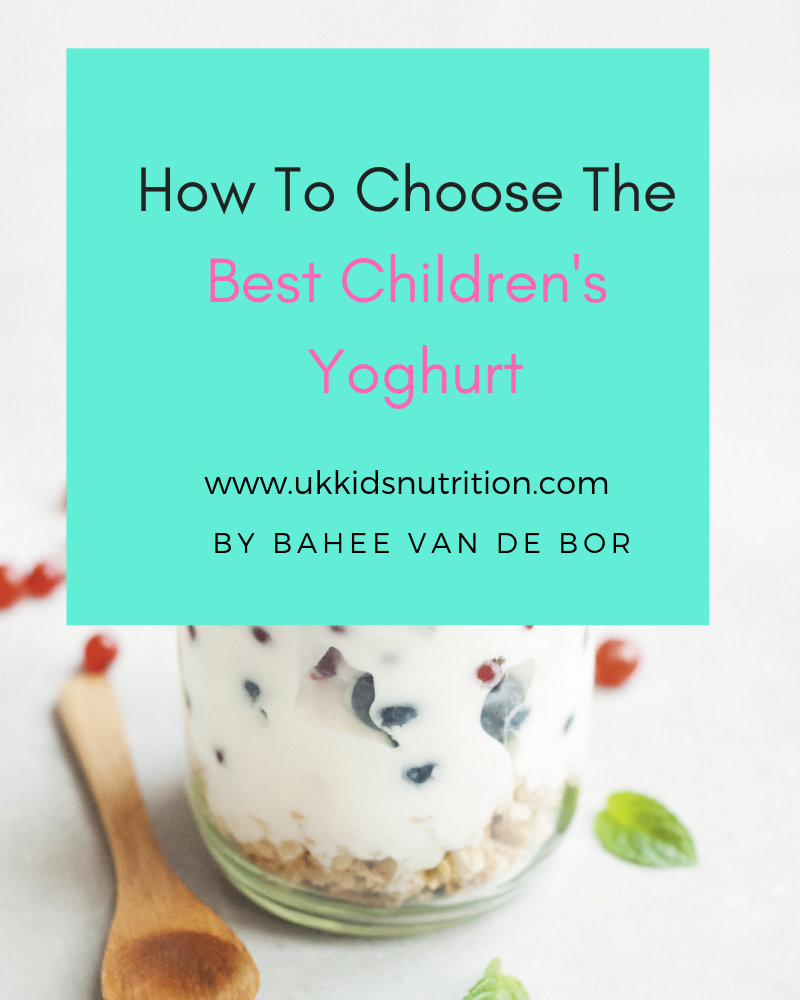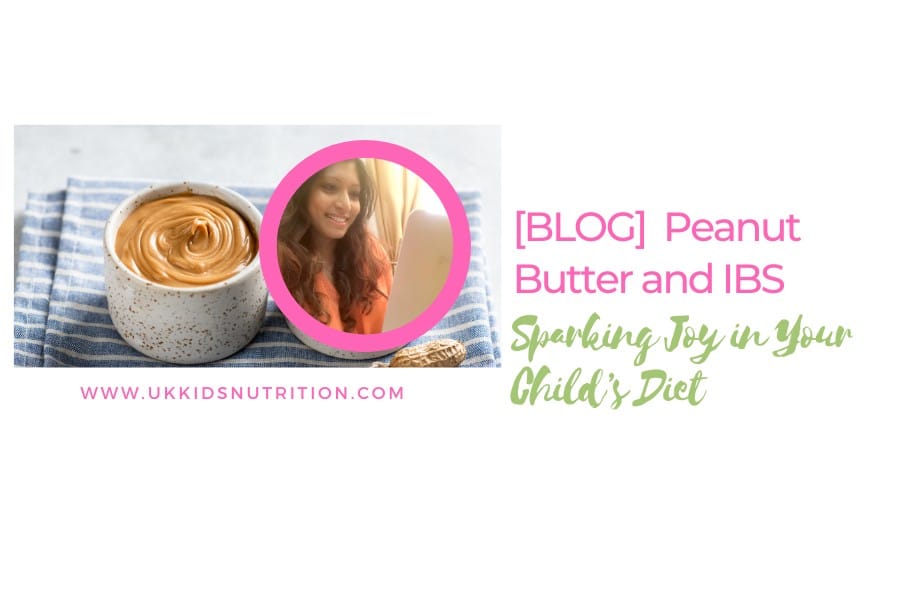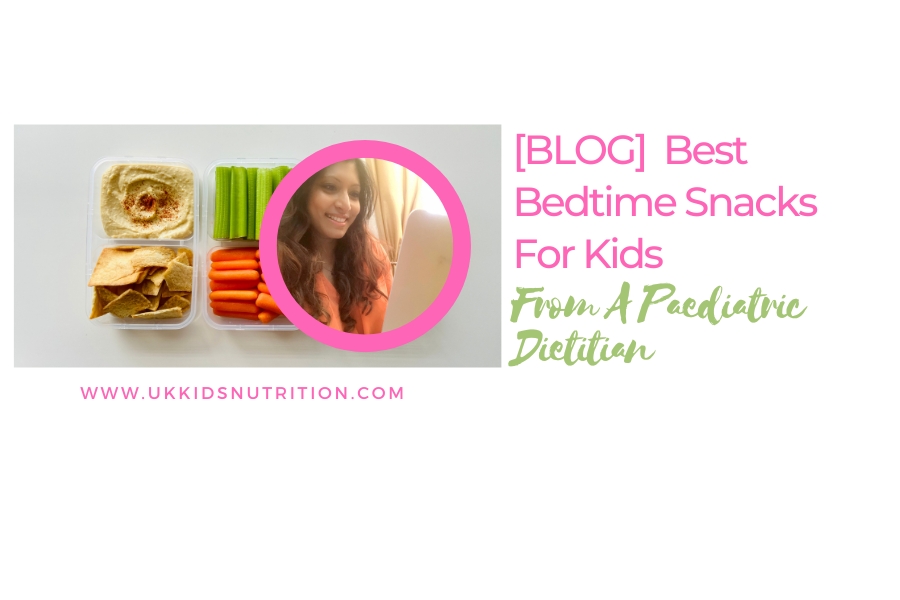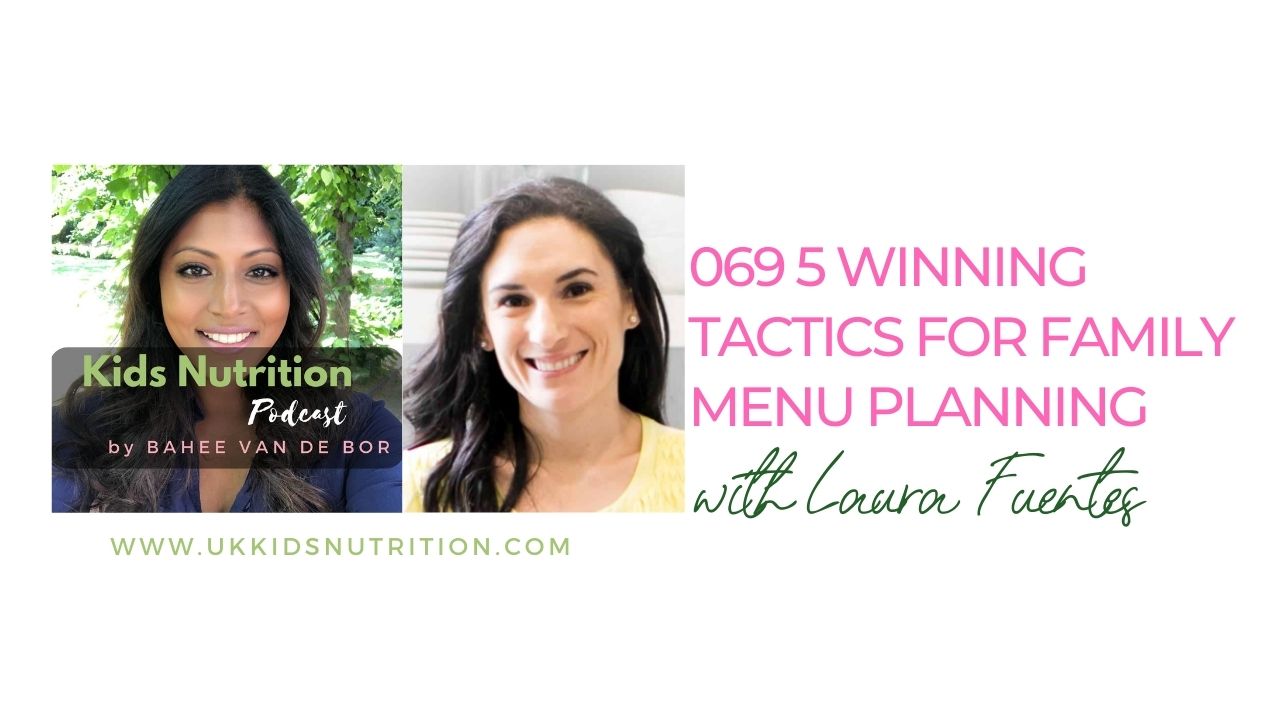Written by Bahee Van de Bor, Paediatric Dietitian
Spooning a bit of yoghurt onto my children’s breakfast cereal this morning, I realised how overwhelming choosing a children’s yoghurt is for parents. Outbursts from the media suggest that there are shocking amounts of sugar in children’s yoghurts. Should you be worried?
And I bet you are wondering whether low sugar yoghurt really is the best?
So, do you need to worry about the sugar in children’s yoghurt and surely it’s a staple snack that makes up healthy lunches for kids, right?
Less than 5g of sugar per 100g
Just when you think you’ve got it right, Public Health England announces that you should be looking for children’s yoghurt that provides no more than 5g of sugar per 100g.
Fabulous, except that in reality unless manufacturers comply immediately, this means that children will no longer be able to eat any of the children’s yoghurts on the supermarket shelves today.
Yes, you read that right. If you know how to screen nutrition labels (or read how to screen breakfast cereals), then you know that there’s a mathematical sugar problem.
You see, there’s more than one type of sugar in yoghurt. The most important type is a carbohydrate called lactose. It’s not an added sugar, it’s just the type of carbohydrate found in milk and dairy products that are commonly referred to as “milk sugar”.
In my opinion, this is a smart carb. Meaning, you don’t need to restrict it as it’s unlikely to spike your child’s blood sugar level. Unless the yoghurt is laced with sugar of course.
Yoghurt is also a source of protein, may have added vitamin D and for kids, it’s a tasty way of getting in their daily dose of calcium.
Now I know what you are thinking, will the added vitamins and minerals in children’s yoghurt compensate for the added sugar?
Dealing with sugar in children’s yoghurt
If you want to offer children’s yoghurt then the best type will be a brand that offers less than 10g per 100g.
The first 5g of “sugar” in any type of yoghurt will usually be lactose. The rest will be added sugar.
The only brand and best children’s yoghurt to meet the golden criteria of less than 5g/100g will be natural, Greek or Greek-style plain yoghurt.
As soon as the fruit or added sugars and syrups are thrown into the recipe, the yoghurt will easily provide over 5g per 100g.
Added sugar obviously improves taste and if it’s from fruit that’s perfect. For a happy balance between getting in calcium and a healthy snack for children, I allow a teaspoon of sugar per 100g (so that’s a total of 10g per 100g after factoring in sugar from lactose).
Ingredients list reveals all
So a bit of sugar is forgivable? It depends. A valuable way of screening children’s yoghurt is to factor in the source of sugar.
One of the greatest things about UK labelling is that heavy ingredients are listed first according to its weight. Foods high in sugar will be listed as one of the first three ingredients.
This might not tell you much if there are only a few ingredients in the yoghurt, but if there’s fruit listed then not all of the sugars above 5g in the nutrition table will be from added sugars.
Added vitamins and minerals
Added vitamins such as Vitamin D or minerals in children’s yoghurts are a bonus, yes, but it shouldn’t be the main reason for choosing a brand.
In fact, I would be highly suspicious of any packaging that positions the yoghurt as a mighty choice for children due to its added vitamins and minerals.
The shocking truth is that the product is bound to be hiding lots of added sugar.
Take this example of a children’s yoghurt. There’s 12g of sugar per 100g. If we allow up to 5g of sugar from lactose, then there’s at least 8g of added sugar.
If you have a toddler, they are ideally taking a daily vitamin D supplement so there is no nutritional benefit from choosing this brand of children’s yoghurt for its vitamin D.
Yes, there are groups of children who are at high risk of vitamin D deficiency and would benefit from foods fortified with it. The focus of this post is about choosing a brand of yoghurt from a sugar perspective.
What’s the verdict? Of course, this range of children’s yoghurt isn’t ideal. But let me tell you a little secret. You’ll find this Peppa Pig range of yoghurt in my own fridge.
Why am I sharing this with you? My daughter loves to select this brand of yoghurt when we go shopping. I indulge her and let her buy it and she’s offered a single pot once or twice a week. That seems to satisfy her. It’s about balance and considering what else your child eats during the week. There are also alternative protein and calcium-rich foods that can help bridge the gap in meeting requirements if you choose not to give yoghurt as a snack or dessert most days of the week.
A valuable way of balancing sugar: remind kids that all foods are delicious. Vegetables are delicious and so are high sugar foods. My philosophy with food is that my children shouldn’t feel deprived or restricted in any way. Instead, we are aiming for balanced eating. Could that approach work for you?
Should you go organic yoghurt?
That’s entirely up to you. Whilst many organic brands of yoghurt may be high in added sugar they may, in fact, have a decent chunk of fruit contributing to the total amount of sugar.
Valuable ways of reducing sugar: keep a tub of natural or Greek yoghurt in the fridge. This means that you can go half and half.
For every spoonful of ‘high sugar’ yoghurt, you can swirl in a spoonful of organic plain or Greek yoghurt (if you are that way inclined). Congratulations – you’ve managed to reduce the sugar content by fifty per cent. Simple, but effective.
It’s a portion thing
I hate to break it to you, but apart from any added vitamins and pretty packaging, children’s yoghurts are just regular yoghurt.
The advantages:
- full fat – children need the calories for growth
- portion size – they are ideally packaged into 60g pots
- added vitamins e.g. vitamin D, but just be aware that if your child is under 5 years of age, they require a daily 10ug vitamin D supplement and won’t need the added vitamin in the yoghurt
- no artificial sweeteners – if you choose reduced-fat or sugar yoghurts for yourself, then you may prefer to buy a children’s brand of yoghurt. You can also stock up on regular yoghurts and portion out the amount required to suit your children.
How to choose the best children’s yoghurt
In summary valuable ways are by:
- choosing brands of children’s yoghurt offering less than 10g per 100g of sugar
- go half and half by swirling in natural or Greek yoghurt without added sugar
- add your own fruit to sweeten plain or natural yoghurt
- any added vitamins and minerals are just a bonus, the main factors to drive your decision should be the amount and source of any added sugar
- if your child has been diagnosed with diabetes, your dietitian may recommend allowing for brands containing artificial sweeteners
- there’s nothing wrong with regular adult yoghurt, just be mindful that portion sizes are appropriate for little bellies
How do you select children’s yoghurt? Do share below.
Let Me Help
Would you like to meet a children’s dietitian who has successfully helped families solve their nutrition problems from around the world?
Whether you are worried about picky eating, food allergy or need to help your child build a healthy relationship with food, I’ll help you manage these with confidence.
For bookings and enquiries email me at [email protected] or book a free initial consultation here.

Bahee Van de Bor
Paediatric Dietitian









